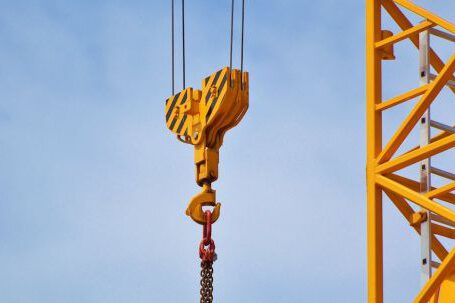Cranes have been used in construction, manufacturing, and heavy lifting for centuries. They are an essential tool in many industries. Over the years, engineers have continued to innovate and improve the functionality of cranes, making them more powerful, efficient, and reliable. In this article, we will look at some of the key innovations that have redefined the functionality of cranes.
Gantry Cranes
Gantry cranes are a type of crane that is used for moving heavy objects horizontally. They are typically used in industrial settings and can be used to move large objects such as construction materials, containers, and heavy machinery. Gantry cranes use a series of pulleys, cables, and counterweights to move the load across the ground. They are typically very large and can be used to move objects that are too large to be moved by a traditional crane.
Telescopic Cranes
Telescopic cranes are a type of crane that uses a telescopic boom to lift and move objects. The boom is made up of several sections that can be extended and retracted as needed. This allows the crane to reach objects that are far away, or to lift objects that are higher up. Telescopic cranes are typically used in construction and industrial settings for lifting and moving heavy objects.
Hydraulic Cranes
Hydraulic cranes are a type of crane that use hydraulic cylinders to lift and move objects. Hydraulic cranes are more powerful than traditional cranes and can lift and move much larger objects. They are typically used in construction and industrial settings and can be used to lift and move objects that are too large and heavy for traditional cranes.
Radio-Controlled Cranes
Radio-controlled cranes are a type of crane that uses radio signals to control the operation of the crane. This allows the operator to control the crane from a distance. This makes the crane more efficient and safer to operate, as the operator does not need to be near the crane when operating it. Radio-controlled cranes are typically used in industrial and construction settings.
Autonomous Cranes
Autonomous cranes are a type of crane that can operate without human intervention. They are programmed to follow a set of instructions and to complete certain tasks. This makes them more efficient and reduces the risk of human error. Autonomous cranes are typically used in industrial and construction settings.
Robotic Cranes
Robotic cranes are a type of crane that is controlled by a computer. The computer is programmed with instructions that allow it to control the crane and to complete certain tasks. This eliminates the need for a human operator and makes the crane more efficient. Robotic cranes are typically used in industrial and construction settings.
Conclusion
Innovation has been key to the continued success of cranes. Over the years, engineers have continued to innovate and improve the functionality of cranes, making them more powerful, efficient, and reliable. The innovations discussed in this article have redefined the functionality of cranes and made them an essential tool in many industries.

![Crane - Gray Concrete Building Interior ]](https://power-at-work.com/wp-content/uploads/2023/09/key-innovations-redefining-the-functionality-of-cranes.jpg)




